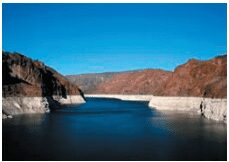1. Arizona Hot Temps. DO NOT walk your pets durring daylight hours. Burning and blistering of their paws can result from these temperatures. DO NOT allow your children to walk around in flip flops, there is not enough protection for their feet. Here are the temperatures on Sunday, June 20, 2016,


2. Got Flies In Your Back Yard? Fly Parasites (Muscidifurax zaraptor, Spanglia spp.) are small, harmless (to humans and animals) beneficial insects that nature has programmed to attack and kill flies when the pest is in its immature pupal stage. The female Fly Parasite will deposit her eggs inside the pupae and once hatched, the tiny parasite larvae consumes the inside of the pest fly pupae. Fly Parasites must find fly pupae in order to reproduce (life-cycle diagram). This need provides a strong and natural incentive to do all the work: search and destroy. Since their only interest is the pest fly pupae, they will not bother humans or animals.


3. EPA’s Atrazine Report Could Lead to ‘De Facto Ban’ JUNE 9, 2016 05:00 AM Farm groups say they are extremely concerned that EPA’s recent report on atrazine could severely limit farmers’ ability to use the herbicide.
In an ecological risk assessment released June 2, EPA said the chemical was putting fish, frogs, plants and aquatic invertebrates at risk, particularly in areas where atrazine is most heavily used.
The report immediately caused controversy among farm groups, who criticized both the process and the findings of the report. “Atrazine is one of the most studied pesticides farmers have,” said Ethan Mathews, director of public policy for the National Corn Growers Association. “There are 7,000 studies pointing to its safety and efficacy.”
But you’d never know that from reading EPA’s report. “It really paints a dire picture and is very different from what studies have shown previously about atrazine’s presence in the environment,” Mathews said. Such conclusions, if they are adopted by EPA, could have dramatic effects on growers’ weed management options. Atrazine is the second-most commonly applied herbicide in the U.S., with farmers applying an estimated 72 million pounds of the chemical annually to kill and control weeds in corn, sorghum and sugarcane.
The report “set a level of (acceptable environmental exposure) that is so low for parts of the country that farmers will not be able to use atrazine,” Mathews said. “…We’re talking tens of millions of acres that will no longer be able to use this product, so you are looking at a de facto ban.”
Unfortunately for farmers, alternatives are slim. Registered in 1958, atrazine is commonly used. “Atrazine is a product that is used in a lot of different herbicide mixes, and the reason why is that it is one of the most effective herbicides that we have for controlling weeds,” Matthews said. “Herbicide resistance in weeds is already a big issue. When you take away a product that has been effective as atrazine, you just exacerbate this issue.”
Developing a new active ingredient for crop protection typically takes about 10 years and costs about $250 million, according to Bayer, which is battling with EPA over the safety of its pesticide flubendiamide.
When will farmers find out the fate of atrazine? According to Mathews, EPA will likely announce its decision in 2017, but farmers have until August 5, 2016, to comment on the proposal.

4. PALLONE: Bill To Enable EPA Regulation Of Toxins. President Barack Obama will sign a major piece of environmental legislation into law Wednesday named after New sign a major piece of environmental legislation into law Wednesday named after New Jersey’s longtime environmental and public health champion, the late Sen. Frank R. Lautenberg.
This legislation takes a major step in fixing our nation’s federal chemical safety laws, This legislation takes a major step in fixing our nation’s federal chemical safety laws, which have been broken for a long time. The Toxic Substances Control Act, or TSCA, was first signed into law 40 years ago to regulate thousands of chemicals, many of which we use every day. Unfortunately, the law did not allow the Environmental Protection Agency to regulate known toxins or to require testing of any chemicals before they were brought to market. If these types of requirements had existed, we could have likely prevented toxic chemicals from ever being put in baby bottles, toys, children’s pajamas or living room couches. Superfund sites throughout New Jersey might never have been contaminated in the first place, and workers could have been protected from exposure to asbestos decades ago.
The Frank R. Lautenberg Chemical Safety for the 21st Century Act reforms this broken law in order to protect the health and safety of our families and our planet. For the first time, under this bill, EPA must decide whether or not to regulate a chemical based solely on health and environmental factors.
It will finally allow EPA to require testing of chemicals quickly and efficiently by providing an alternative to the years-long process that now exists. It will also ensure that new chemicals are reviewed and regulated, if necessary, before they go on the market.
EPA must now identify populations that are disproportionately at risk either due to greater exposure to a particular chemical or greater susceptibility to injury from the chemical. Then, if EPA decides to regulate the chemical, it must protect the vulnerable populations impacted by that chemical.
I hope this legislation will empower EPA to get dangerous chemicals like asbestos, lead, BPA and phthalates out of consumer products and out of the environment.
The bill removes a procedural hurdle that prevented EPA from regulating asbestos for the past 25 years. Back in 1989, the EPA banned asbestos under TSCA after conducting 10 years of study and analysis. However the ban never took effect. Instead, it was overturned by the courts because of a serious flaw in the law and serious limitations on EPA’s authority to ban the substance. This bill fixes that flawed provision.
It provides more funding so EPA has the resources to conduct all of this important work through new user fees charged to the chemical companies. he final bill includes a provision that ensures EPA can act quickly to reduce our exposure to the worst chemicals currently on the market. These chemicals threaten public health, our oceans, and the entire environment, and therefore EPA should have the ability to review them immediately
As this legislation moved through the process, it garnered widespread support from both Democrats and Republicans. The final bill passed the House in May by a vote of 403 to 12, and then the Senate unanimously approved it earlier this month.
Senator Lautenberg dedicated the last years of his long career in the Senate to fixing this law, and tomorrow the President will honor that memory by signing this bipartisan legislation bearing his name. Frank Pallone is a Democratic congressman whose 6th District in New Jersey includes most of Middlesex County and much of Monmouth County.
5. Arizona Water Initiative starts with meeting in Mohave County . An influx of large-scale farming interests in Mohave County has prompted worries and questions over water resources. Those questions, at least some of them, will be answered June 29 when the Arizona Department of Water Resources holds a public meeting to discuss the Northwest Basins Planning Area, one of 22 such areas Gov. Doug Ducey created last October when he established the Arizona Water Initiative.
The Mohave County Board of Supervisors requested the basins here be a top priority, as some of the largest water basins in the state are in the county. The state agreed and Kingman is home to the first of many that will be held in the state to examine the demand for water and the potential challenges in meeting that demand.

An overview of the groundwater conditions will be included in the meeting, which takes place in the Mohave County Administration Building auditorium, 700 W. Beale Street, from 5 p.m. to 7 p.m.
Also included on the agenda is an explanation of the planning area process, the hydrology of the Northwest basins and existing groundwater management tools.
The public will be allowed to comment and to provide information regarding water concerns.
Ducey established the water initiative last fall to help ensure “The certainty and vitality of Arizona’s water supplies for future generations
While Water Resources will work with local governments on defining the challenges and developing strategies, Mohave County is home to a large farming operation along Stockton Hill Road between Kingman and Pierce Ferry Road, and in Red Lake and Golden Valley. Also, a nut farm is going in off of Route 66 between Kingman and Valle Vista.
While nobody really knows what impact these and other operations will have, more are likely on the way. Farmers are leaving drought-stricken, heavily-regulated California by the droves and many are heading straight to Arizona, according to Supervisor Buster Johnson.
For more information on the June 29 meeting, contact John Riggins at ADWR at jrriggins@azwater.gov or call him at 602-771-4782.

6. Will the Grass be Greener? Grassland Management in the Verde River Watershed. Field Trip Tuesday, July 5th 10:30 a.m. – 2:30 p.m. FREE BRING WATER and LUNCH
Meeting Place: Yavapai County Admin Building Board Chambers 1015 Fair Street, Prescott Please join us for our first summer field trip. On this trip, we will review the methods and progress of grassland enhancement projects for wildlife, livestock management, and the overall range resource and learn how they impact the Verde River Watershed. Participants will have the benefit of learning about current projects from three expert guides.
7. Water’s Role In The Future Of Cities. Source: Forbes/Reinventing America Two recent stories, in very different parts of the country, highlight the challenges of water management in the U.S. Whether or not the challenges are brought on by climate change or not, the changes could mean longterm peril for some of nation’s cities — and new opportunity for others.
National Public Radio’s Morning Edition show ran a story this morning about the Southwest heat wave and its impacts on the region’s meager water supply. Lake Mead, the nation’s largest reservoir and the supplier of water to nearly 20 million people in the Southwest, is drying up quickly due to the decades-long drought in the region. Water experts in the region say that the drought and warm winter temperatures are depriving the region of mountain snowpack the feeds the Colorado River and Lake Mead, and heat waves occurring earlier in the summer accelerate the melting and evaporation process.

To counter this, the Southern Nevada Water Authority is building a low lake level pumping station, allowing it to draw water from a water level as low as 875 feet above sea level. The $1.5 billion project, scheduled for completion in 2020, would extend utilization for the lake and maintain service for Las Vegas and its surrounding areas. For context, Lake Mead took six years after the construction of Hoover Dam to reach its high-water mark of 1,220 feet above sea level. The drought and water usage has taken to water level to about 1,080 feet. Engineers at Hoover Dam say that if the level falls below 900 feet, the Federal Bureau of Reclamation would no longer be able to release Colorado River water out of Hoover Dam — jeopardizing the water needs of Los Angeles, Phoenix, San Diego, and millions of acres of farmland that supply winter produce for the nation.
As water levels fall in the Southwest, efforts to manage its usage and minimize its impacts on the region’s large cities are peaking.
Meanwhile, yesterday the city of Waukesha, WI received permission from the Great Lakes Compact to draw water from Lake Michigan. The Compact is the eight-governor commission representing the eight states within the Great Lakes watershed. Waukesha’s request to tap into Lake Michigan represents the first test to the Compact, which was formed in 2008.
This raises an interesting question — is this a glimpse into the future for cities in both regions? Are we entering a period where Southwest cities will be doubling down on improving water security during a period of drought? Are Midwestern cities willing to extend water services to more communities further away from the Great Lakes, tying them to the largest freshwater resource in the world? Will water access play an even larger role in the future viability of cities? It could be that climate change may have quite a bit to say about the next generation of city winners and losers.
8. Mount Lemmon Is A World-Class Ride – Mount Lemmon is one of ‘The Seven Best Rides in the World’ for cycling, according to The Economist’s 1843 magazine. Calling it “two hours of flow-state-bliss,” the article ranks the ride on Catalina Highway with trails in France and Italy. “It is not the country’s highest or toughest climb by a long shot, but what it offers, across several dozen miles and some 7,000 feet of elevation gain on the Catalina Highway, is a wonderfully curving, generously shouldered, steadily rising route from the hot desert floor into cool, thickly timbered ski country – with endless Cinemascope views and eerie rock formations the whole way,” says author and cyclist Tom Vanderbilt. To find out the other routes that made the list, follow this link: http://bit.ly/28LEyY9 Source: The Economist 1843 magazine
9 ARIZONA WATER REUSE SYMPOSIUM
July 24-26, 2017
Little America Hotel in Flagstaff, AZ
This annual event is presented jointly by AZ Water Association and Wate Reuse Arizona.
Keynote Speakers
Jerry Nabours, Flagstaff Mayor Sarah Porter, Director, Kyl Center for Water Policy, Morrison Institute, ASU
Guy Carpenter, President, Water Reuse Association
Doug Owen, Co-Chair, Water Environment & Reuse Foundation
Registration
Early registration is encouraged due to limited space. Deadline to register is July 22, 2016.
Online Registration:https://azwater.site-ym.com/events/RegistrationMissing.aspx?id=781414&itemid=b125b f5e-d1e9-4b09-8e4e-669a4f40f398
Full Conference Registration $250
Single Day Registration $125
Student Registration of $125
2nd Annual Purple Water Balloon Battle. Join us to get acquainted and network with your fellow water reuse professionals. If weather permits, we will host a purple recycled water balloon battle to kick-off the event! Get ready to rumble TEAM ASU & TEAM NAU! Let’s see if you can push TEAM UofA off their 1st year throne!
Dinner at Arizona Snow Bowl : Our Cocktail Reception and Dinner on Monday will be held at Hart Prairie Lodge located at Arizona Snow Bowl. A shuttle sponsored by Stantec and Sundt, will be provided for safe transportation.
The winner will receive a complimentary registration to the WateReuse National Symposium being held September 11-14, 2016, in Tampa, Florida and up to $500 in travel assistance.
Accommodations
All symposium sessions will be held at the Little America Hotel in Flagstaff. A block of rooms has been set aside for attendees through July 3. A room rate of $125/night will be honored for symposium attendees based on the availability of rooms. Ask for group sales and mention the Water Reuse Symposium to receive the discounted rate.
